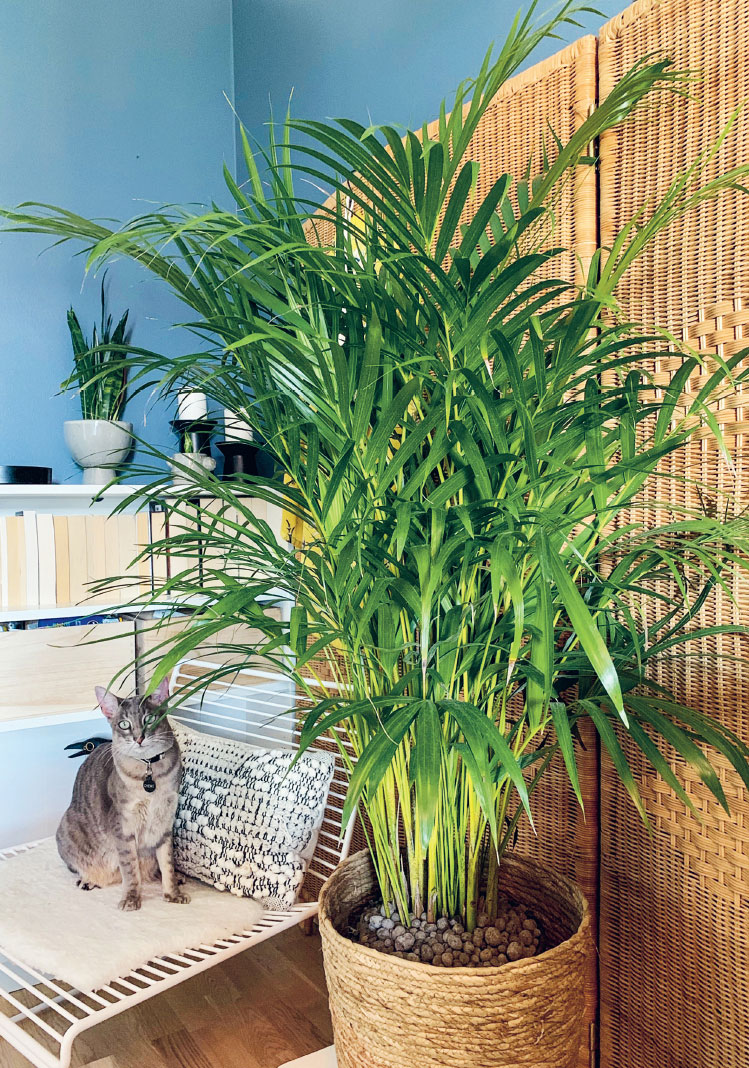 LIGHT
LIGHTThe areca palm prompts thoughts of southern latitudes, sunshine and warmth. With its distinctive shape, it makes a lush, tropical feature in any home. In particular it is an air-purifier of some renown, making it a perfect plant for asthma- and allergy-sufferers. Studies have shown the areca palm to be a particularly effective cleanser of airborne toxins such as xylene and toluene (both VOCs found in paint thinners, for example).
 LIGHT
LIGHT
The areca palm likes a well-lit position, ideally in bright, indirect light. A south-facing window is OK, but it shouldn’t provide more than two to three hours of direct sunlight a day.
 WATERING
WATERING
It needs regular watering, when the top of the soil (the top few centimetres/ about 1in) is dry. Water weekly during the warmer months, and a few times a month during the colder months. Water less in cooler rooms or where there is less light.
 SOIL
SOIL
Use potting compost with leca balls in the bottom of the pot. Areca palms are not demanding and do well in a small pot. If you want a large plant, repot every two or three years.
 FEEDING
FEEDING
Feed with a liquid organic plant food two to three times a month during spring and summer. Give it little or no food in the colder months and for the first few months after repotting.
 ORIGIN
ORIGIN
It is native to Madagascar, where it can grow to 6 to 12m (20 to 40ft) in height.
 MISCELLANEOUS
MISCELLANEOUS
If given good growing conditions, it can occasionally put out panicles of small yellow flowers, which then develop into small, egg-shaped fruits. These start out yellowish in colour before maturing to a dark purple, almost black.
